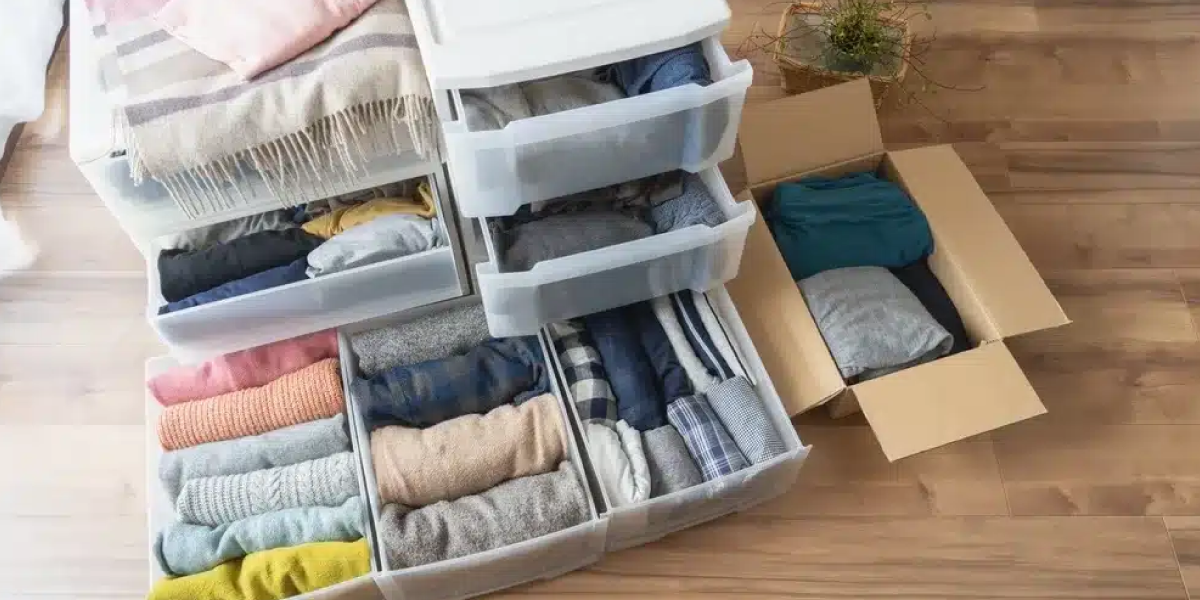You know that moment when you pull out your favourite jacket after months and find it smelling damp or with tiny moth holes? It feels like a waste, right? That’s why learning how to store clothes long-term the right way matters.
The best way to store clothes is to wash, dry, and pack them in proper storage bags, then keep them in a cool, dry place. This stops mould, pests, and fading, so your wardrobe stays safe.
Most people think storing dresses or jeans is just folding and putting them in a box, but that’s not enough. With the right steps, you can protect every fabric type, save money, and always have fresh clothes ready to wear.
Let’s go step by step so you know exactly what works.

Clothes can get ruined if they are left in damp, hot, or messy spaces. Bugs like moths love natural fabrics, and heat can make them fade. Proper storage saves you money, protects your favourite outfits, and helps you keep them in perfect shape for when you need them again.
That’s the reason, here, we’re going to share in detail the best way to store clothes.
Don’t waste time packing things you won’t wear again. Sort your clothes into four simple piles:
This way, you’ll only store what matters, saving space and effort later.
Always clean clothes before storage. Even tiny stains or body oils can attract pests and cause damage. Make sure clothes are fully dry, because dampness can cause mould and bad smells.
Quick tip: skip ironing now. Ironing can be done when you bring them out again, so you save time and prevent unnecessary fabric stress.
Fix problems before putting clothes away. Small issues grow worse if left for months.
Also, when people think about how to store clothes long-term, they usually store shoes, boots, and accessories at the same time, especially in seasonal storage.
The container matters as much as the clothes.
If you have bulky items, large storage bags for clothes can help, but pick breathable ones instead of plastic to keep fabrics safe.
Where you store matters.
If your home does not have a safe spot, renting a storage unit is often the best way to store clothes safely.
How you pack makes a big difference.
Moths, silverfish, and other bugs love fabrics, especially wool. Protect your clothes naturally:
Write down what you packed and where you put it. This saves you from digging through every box when you need just one dress or jacket. An inventory is extra helpful for storing dresses or seasonal clothes you might rotate later.

Not all fabrics need the same care. Here’s how to handle them one by one.
| Clothes by Type | Storing Method |
| Wool |
|
| Cotton |
|
| Silk |
|
| Leather and Suede |
|
| Denim |
|
| Formal Dresses and Suits |
|
Finally, instead of worrying about where to store your clothes, you can also let a professional storage renter, like Easy Way Removals, handle it. You’ll know your wardrobe is stored in the best way possible, ready for you whenever you need it.
Hopefully, with these steps, you now know how to store clothes long-term. From decluttering and cleaning to choosing the right container and location, every step helps your clothes stay fresh and damage-free.
And with a little professional help, the whole process becomes simple and stress-free.
If moving feels like a lot of work, you can take a look at how Easy Way House Removals manages the overall moving process step by step here.
It’s better not to store clothes in the garage because garages often get too hot, too cold, or too damp. These changes can damage fabrics and attract pests. A stable, dry, and cool spot inside your home or a storage unit is much safer.
It’s smart to check your stored clothes every few months. This way, you can spot early signs of mould, dampness, or pests before they cause big damage.
Yes, the hanger type matters. Padded or wooden hangers are best because they keep the shape of coats, jackets, or suits. Thin wire hangers can leave marks and even stretch the fabric over time.
Yes, cedar blocks and cedar hangers naturally keep moths and pests away. They smell fresh and are much safer than mothballs. Just remember to replace or lightly sand them every year to keep the scent strong.
Clothes should be at a mild temperature, not too hot or too cold. Around room temperature, between 13 and 27 degrees Celsius, is perfect. Sudden changes in temperature can cause dampness and damage fabrics.
It’s best to fold jeans and other heavy clothes. Hanging them for months can pull the fabric and change their shape. Fold them neatly and place them at the bottom of your storage box.
No, avoid storing clothes with perfume or deodorant because these scents can fade or even stain the fabric over time.




